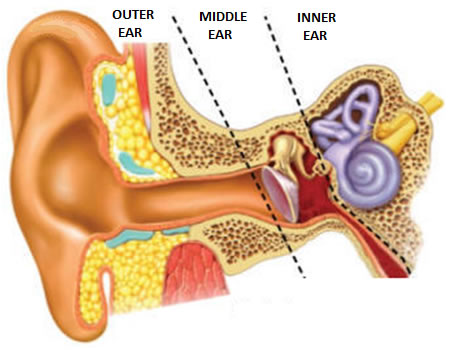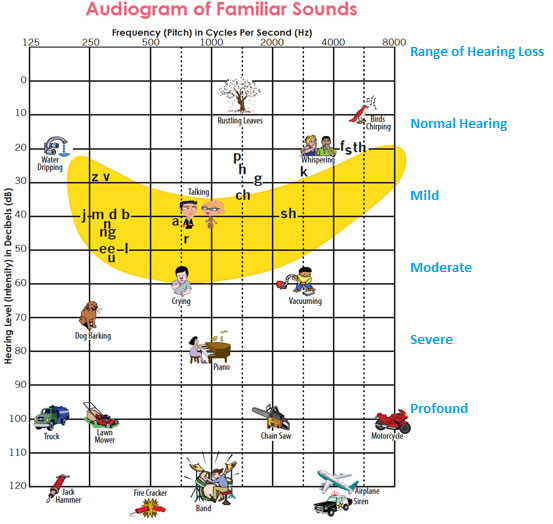About Hearing
How we hear
The auditory system is a complex organization of sensory function responsible for hearing and balance. The ear captures acoustic energy (sound) and sends the information to the brain for interpretation. The ear is divided into 3 major parts: the outer ear, middle ear and inner ear.

More information about hearing and the ear can be found here:
- www.oticon.ca/hearing/facts/hearing/how-hearing-works.aspx
- www.asha.org/public/hearing/How-We-Hear/
- www.phonak.com/ca/b2c/en/hearing/understanding_hearingloss.html
- www.cochlear.com/wps/wcm/connect/intl/home/understand/hearing-and-hl/about-hearing-and-hearing-loss
Hearing loss
Hearing loss can be characterized by degree and type. Hearing loss can be present at birth (congenital), acquired or develop over time. The severity and configuration of hearing loss can change or fluctuate and should be monitored for effective intervention and management.
Degrees of hearing loss
Degrees of hearing loss are classified into categories ranging from within normal limits to profound hearing loss. A person’s hearing thresholds are plotted on an audiogram and describe the softest intensity (loudness) of a sound (stimulus) that is detected at a given frequency (pitch). Stimuli can be presented by air conduction, bone conduction or via sound-field. A comparison between air and bone conduction threshold results helps to determine the type of hearing loss an individual has.

Graphic credit: www.jtc.org/parents/ideas-advice-blog-comments/audiogram-of-familiar-sounds
Types of hearing loss
Hearing loss can be described as affecting one ear (unilateral) or both ears (bilateral). The type of hearing loss is dependent on where the difficulty lies in the outer and/or middle ear (conductive), the inner ear or beyond (sensorineural) or in a combination of areas (mixed).
More information about types of hearing loss can be found here:
- www.canadianaudiology.ca/consumer/hearing-loss-and-your-child.html
- www.asha.org/public/hearing/Types-of-Hearing-Loss/
Managing hearing loss
Hearing loss management will vary for each individual and their specific hearing needs. Technology exists in the form of hearing aids, cochlear implants and assistive listening devices. Management for those using technology can occur in the form of audiologic rehabilitation and early intervention.